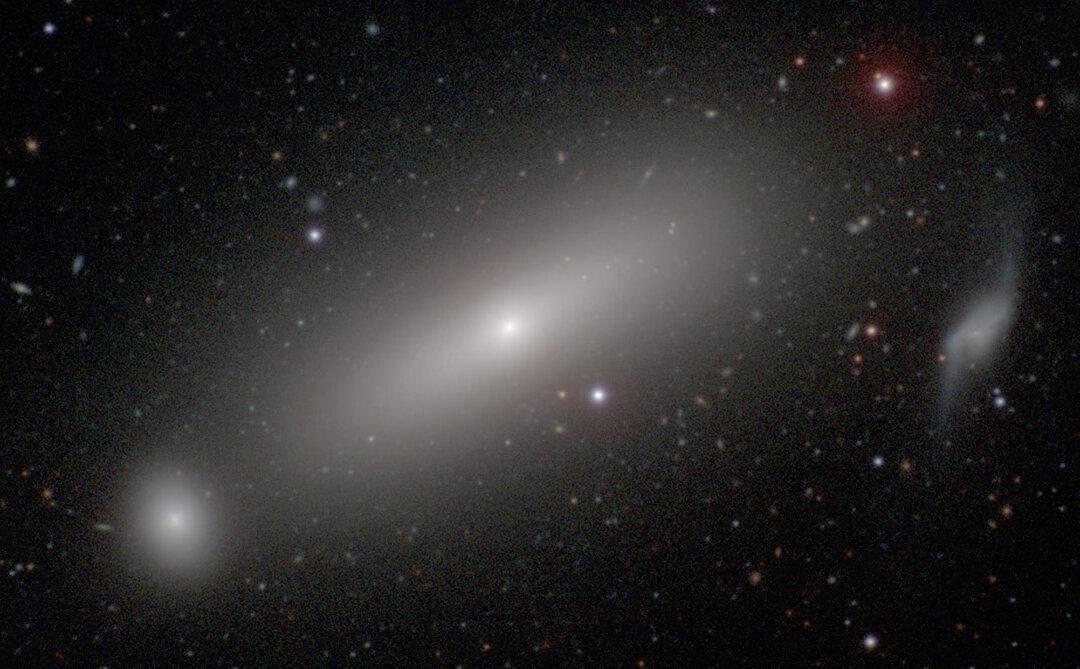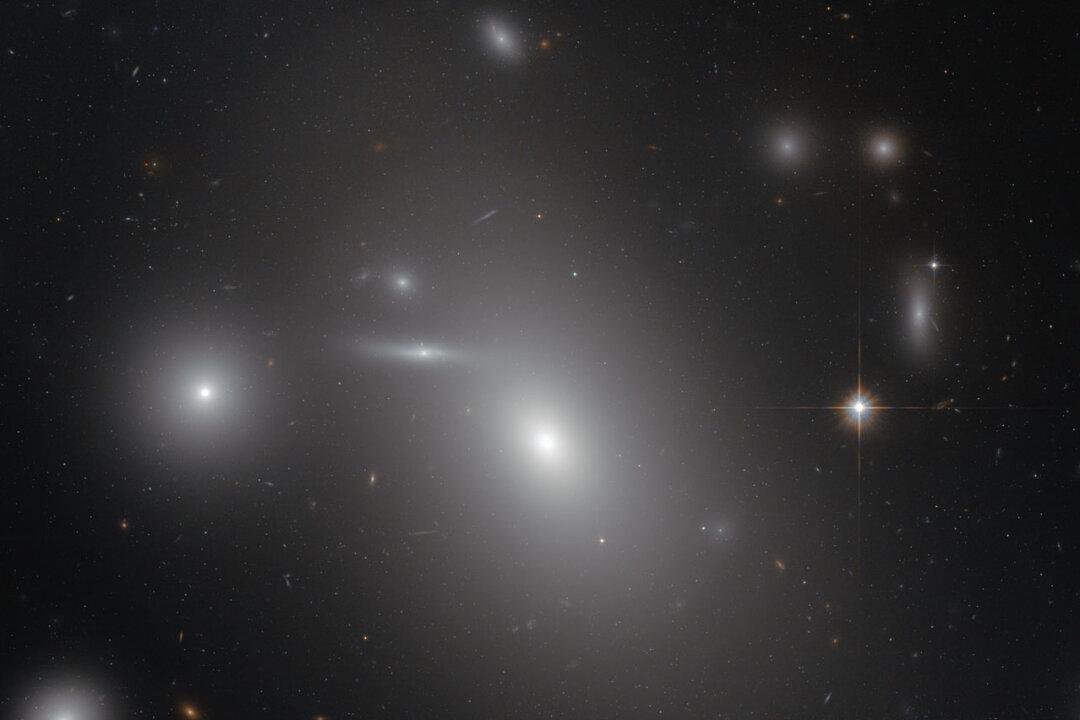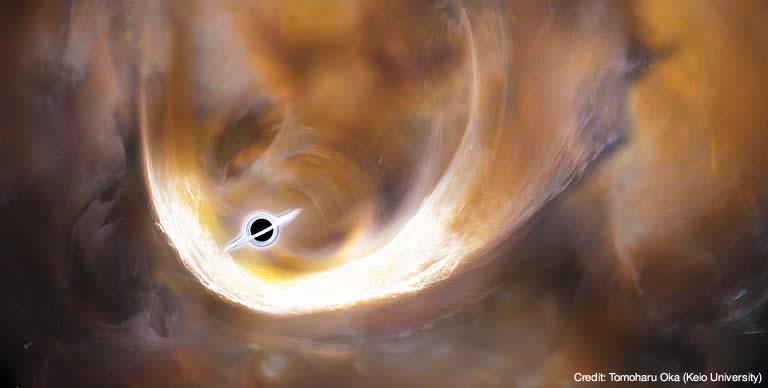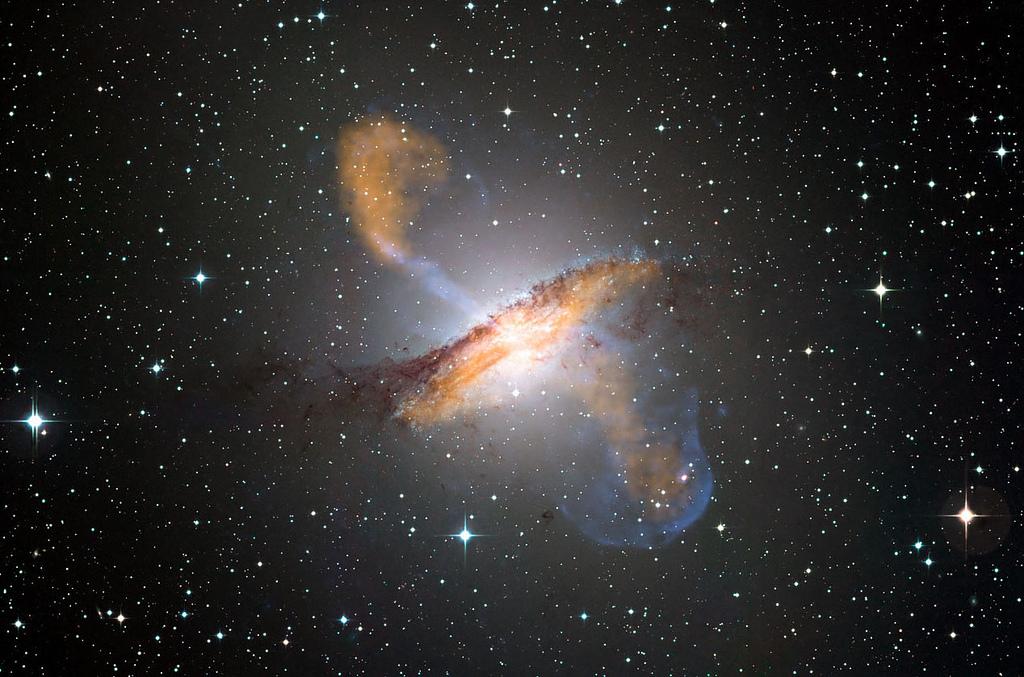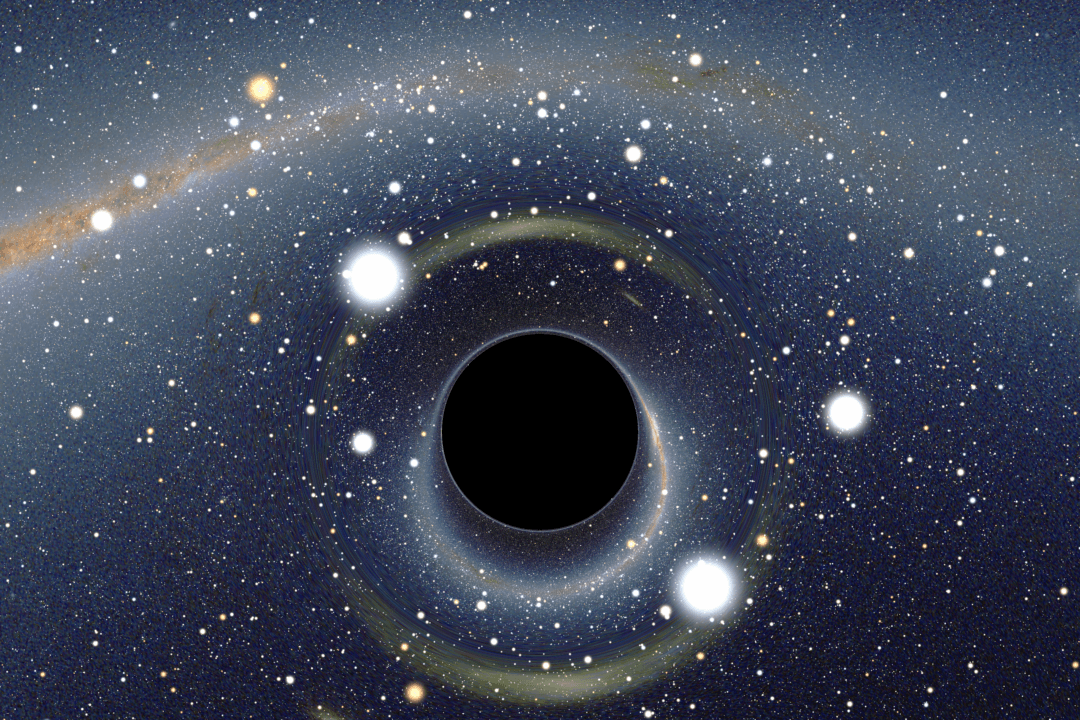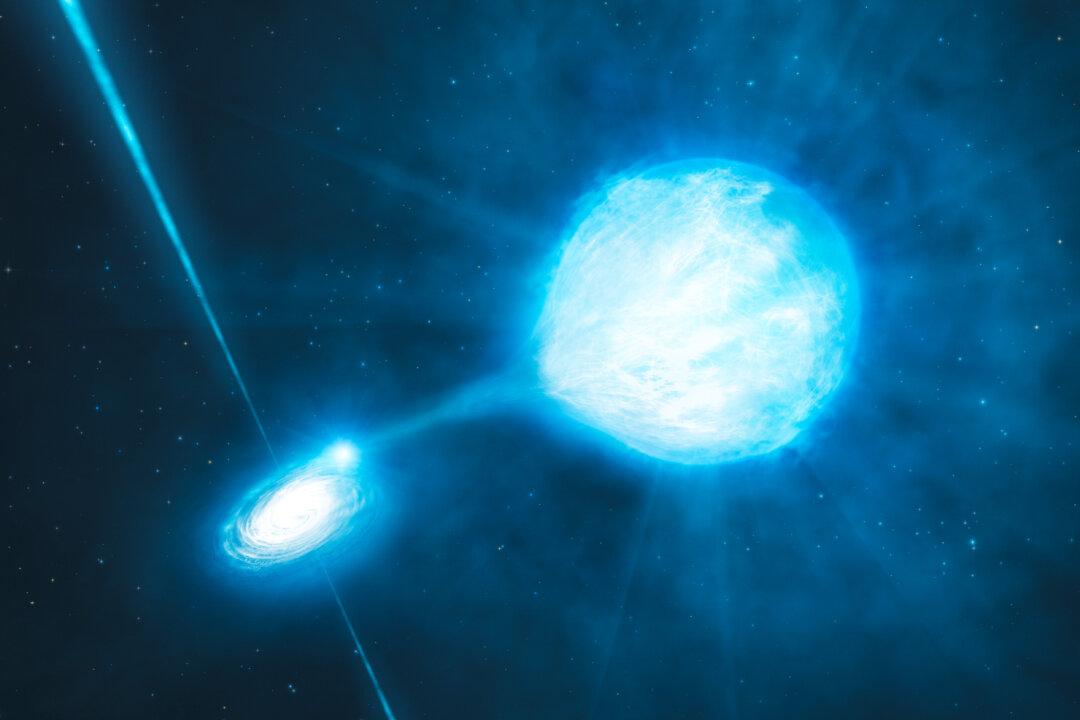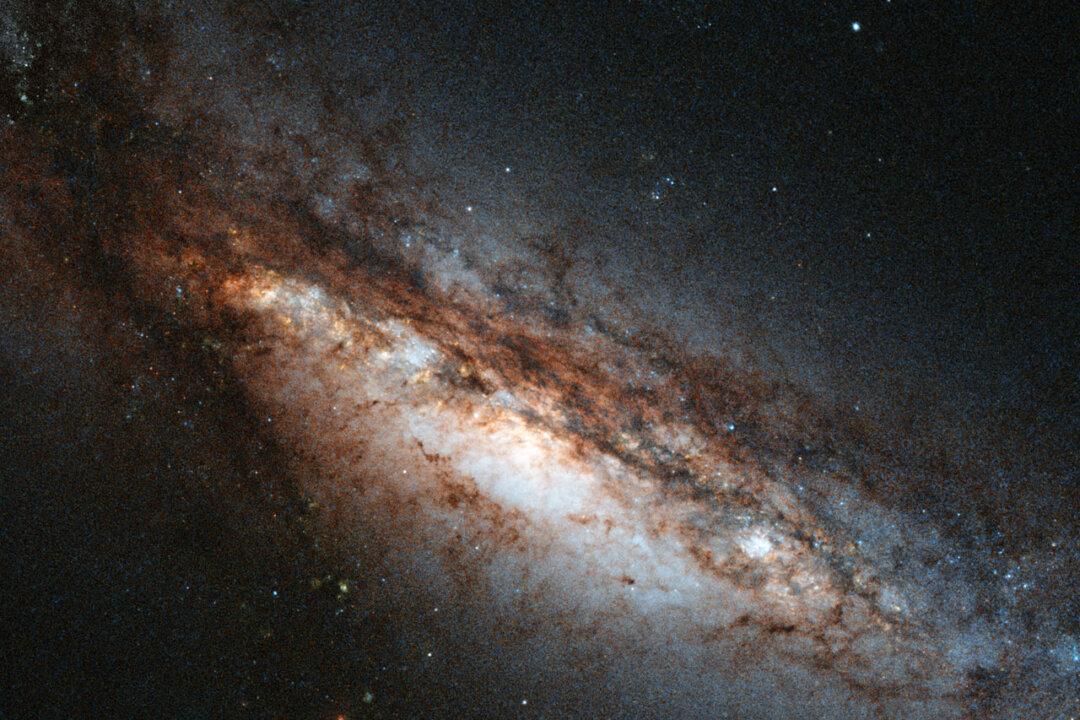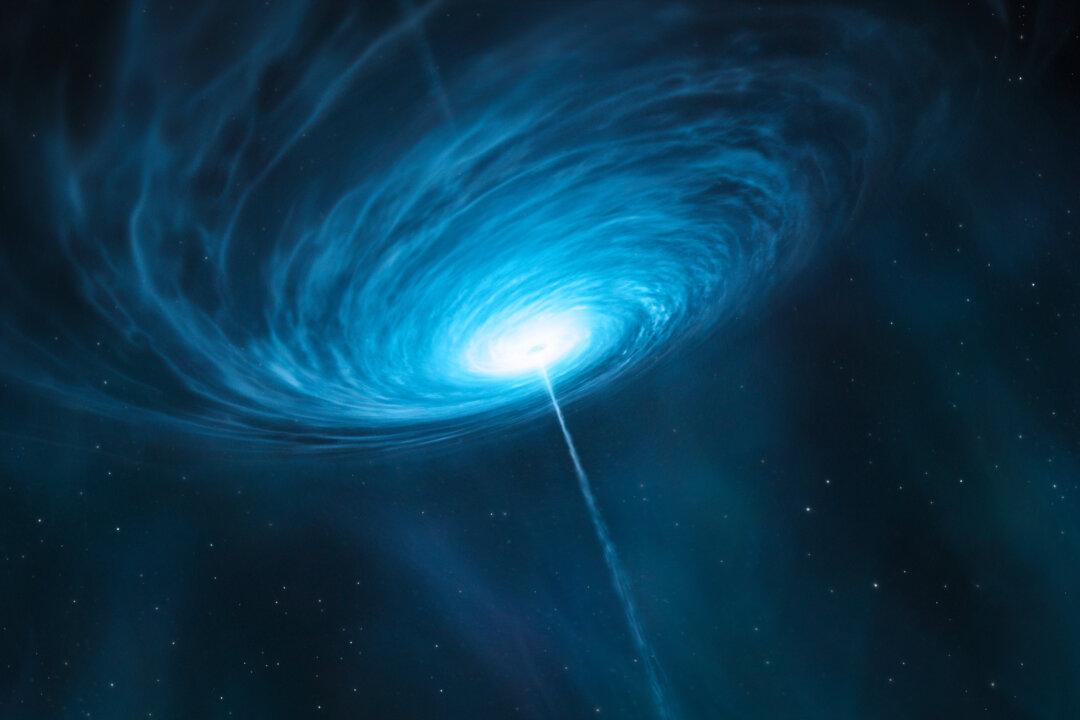Focus
black holes
This Black Hole Is 660 Million Times as Massive as the Sun
Scientists have measured with unprecedented accuracy a black hole that is about 660 million times as massive as our sun, and is encircled by a cloud of gas moving at about 1.1 million miles per hour.
|
NGC 4889 Galaxy, Hiding Black Hole 21 Billion Times the Size of the Sun, Captured by Space Telescope
|
Astronomers Think They Discovered the Second Largest Black Hole in the Milky Way
Scientists think that they’ve found the second largest black hole in Milky Way, invisible and with a mass 100,000 times that of the sun. The black hole was observed with the Nobeyama Radio Telescope in Japan.
|
Astronomers Watch Black Hole Burp After Eating a Star
Scientists have for the first time witnessed a black hole swallow a star and then quickly eject a flare of stellar debris moving at nearly light speed.
|
Watch This Black Hole Rip Apart a Star
Astronomers caught a black hole tearing apart a star in the center of a galaxy about 290 million light years away from Earth.
|
Where Are the Missing Gravitational Waves?
Neutron stars – the dead stellar remnants of old, burned-out stars – are some of the most extreme objects in the universe.
|
Is Hawking Any Closer to Solving the Puzzle of Black Holes?
Stephen Hawking said something! And again the international media is all a'buzz.
|
On Second Glance, Exotic Star System Looks a Bit Ordinary
New data from a distant galaxy suggests a puzzling stellar phenomenon may not be what astronomers have long believed.
|
Giant Black Hole in Normal Galaxy Breaks the Rules
Most black holes have little mass compared to their host galaxy, but a recently discovered black hole grew so quickly the host galaxy couldn’t keep pace.
|
Astronomers Watch Black Hole Burst Back to Life
Radio astronomers are watching a previously dormant black hole wake up in a dramatic display as material falls onto it for the first time in perhaps millions of years.
|
Hubble Confirms: Quasars Born From Galaxy Crash
Quasars emit a light as bright as that of one trillion stars. Scientists think they get their energy from supermassive black holes.
|
Pulsars With Black Holes Could Hold the ‘Holy Grail’ of Gravity
Pulsars are very dense neutron stars that are the size of a city (their radius approaches ten kilometres), which, like lighthouses for the universe, emit gamma radiation beams or X-rays when they rotate up to hundreds of times per second. These characteristics make them ideal for testing the validity of the theory of general relativity, published by Einstein between 1915 and 1916.
|
This Black Hole Is 660 Million Times as Massive as the Sun
Scientists have measured with unprecedented accuracy a black hole that is about 660 million times as massive as our sun, and is encircled by a cloud of gas moving at about 1.1 million miles per hour.
|
NGC 4889 Galaxy, Hiding Black Hole 21 Billion Times the Size of the Sun, Captured by Space Telescope
|
Astronomers Think They Discovered the Second Largest Black Hole in the Milky Way
Scientists think that they’ve found the second largest black hole in Milky Way, invisible and with a mass 100,000 times that of the sun. The black hole was observed with the Nobeyama Radio Telescope in Japan.
|
Astronomers Watch Black Hole Burp After Eating a Star
Scientists have for the first time witnessed a black hole swallow a star and then quickly eject a flare of stellar debris moving at nearly light speed.
|
Watch This Black Hole Rip Apart a Star
Astronomers caught a black hole tearing apart a star in the center of a galaxy about 290 million light years away from Earth.
|
Where Are the Missing Gravitational Waves?
Neutron stars – the dead stellar remnants of old, burned-out stars – are some of the most extreme objects in the universe.
|
Is Hawking Any Closer to Solving the Puzzle of Black Holes?
Stephen Hawking said something! And again the international media is all a'buzz.
|
On Second Glance, Exotic Star System Looks a Bit Ordinary
New data from a distant galaxy suggests a puzzling stellar phenomenon may not be what astronomers have long believed.
|
Giant Black Hole in Normal Galaxy Breaks the Rules
Most black holes have little mass compared to their host galaxy, but a recently discovered black hole grew so quickly the host galaxy couldn’t keep pace.
|
Astronomers Watch Black Hole Burst Back to Life
Radio astronomers are watching a previously dormant black hole wake up in a dramatic display as material falls onto it for the first time in perhaps millions of years.
|
Hubble Confirms: Quasars Born From Galaxy Crash
Quasars emit a light as bright as that of one trillion stars. Scientists think they get their energy from supermassive black holes.
|
Pulsars With Black Holes Could Hold the ‘Holy Grail’ of Gravity
Pulsars are very dense neutron stars that are the size of a city (their radius approaches ten kilometres), which, like lighthouses for the universe, emit gamma radiation beams or X-rays when they rotate up to hundreds of times per second. These characteristics make them ideal for testing the validity of the theory of general relativity, published by Einstein between 1915 and 1916.
|


